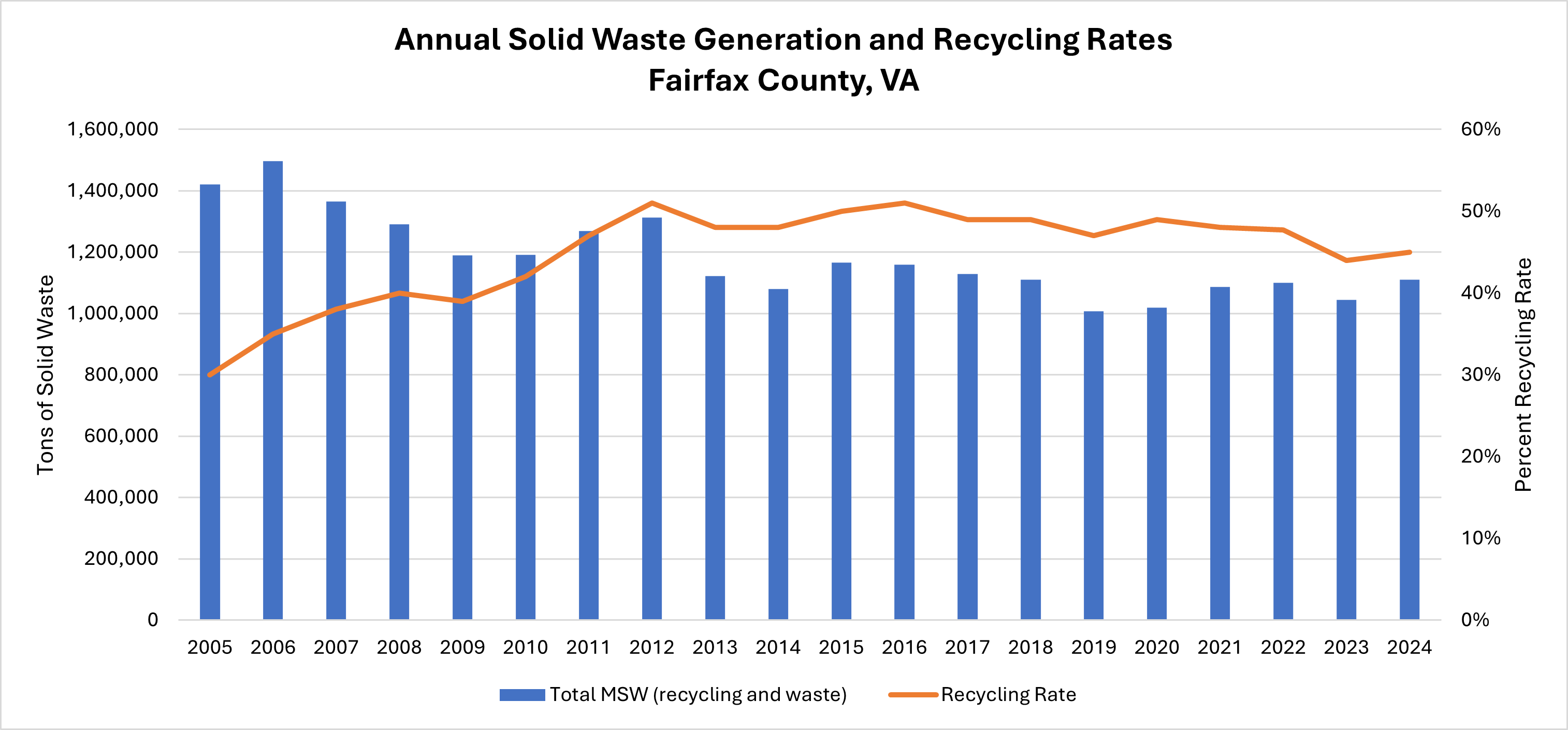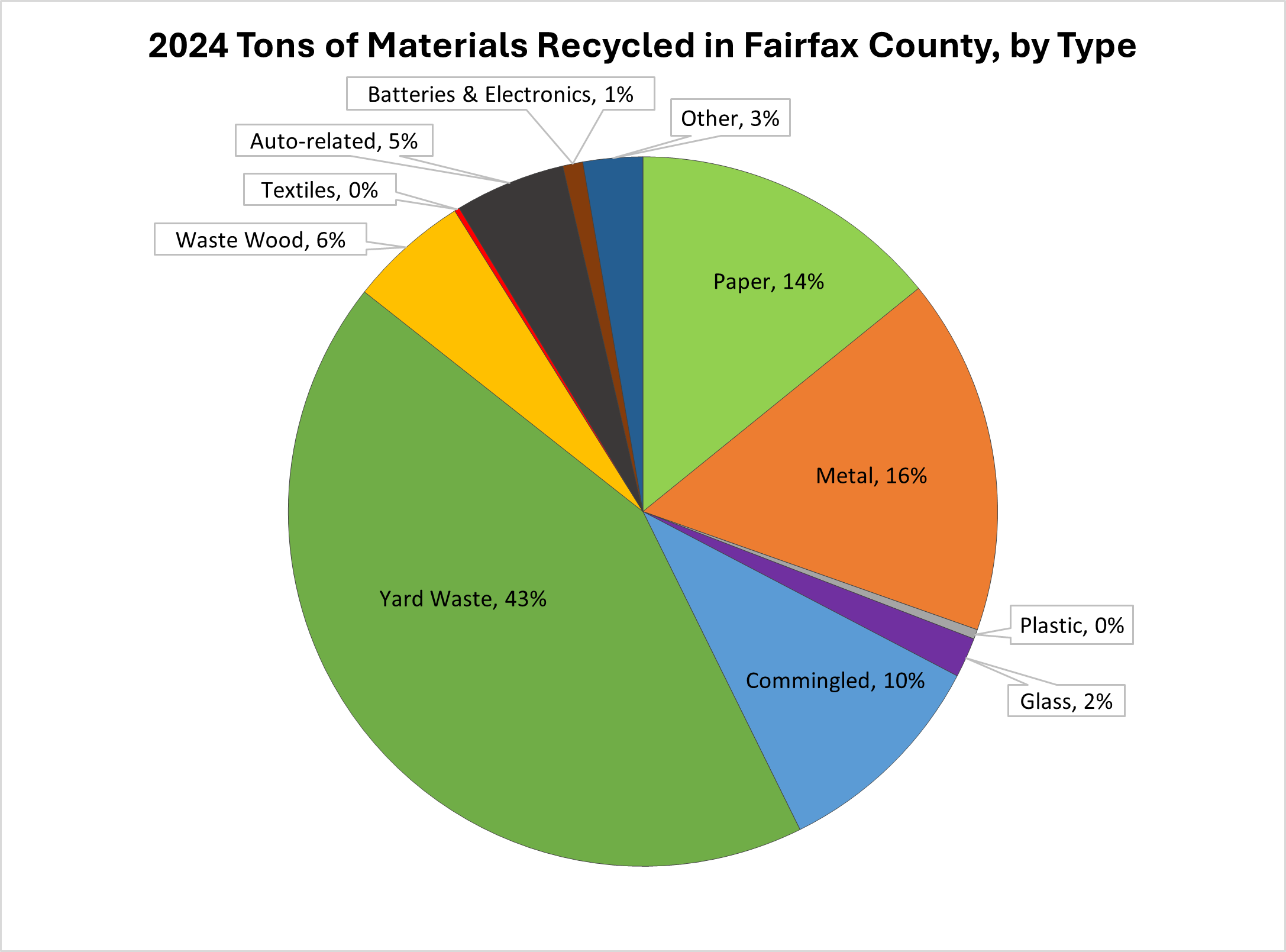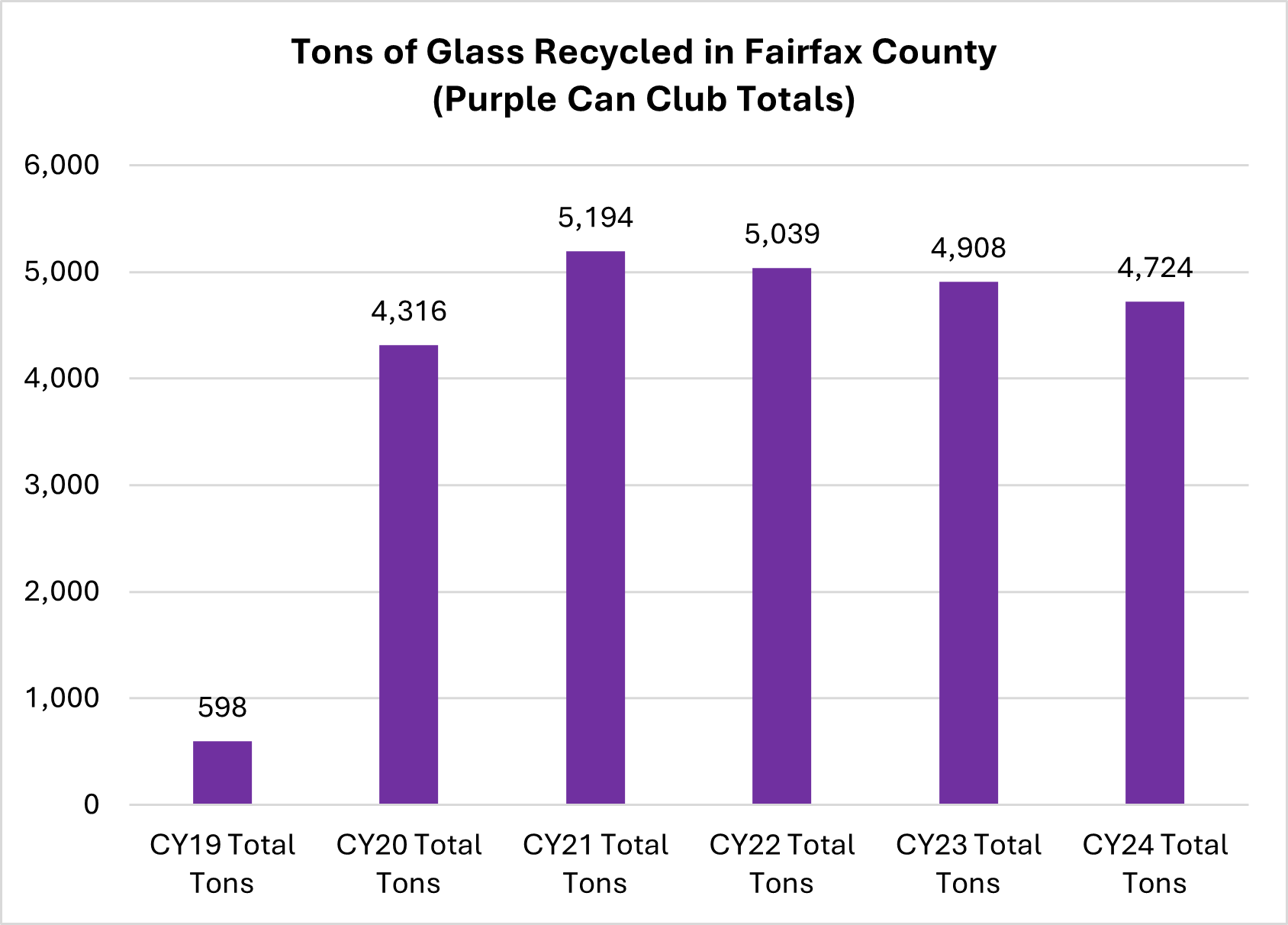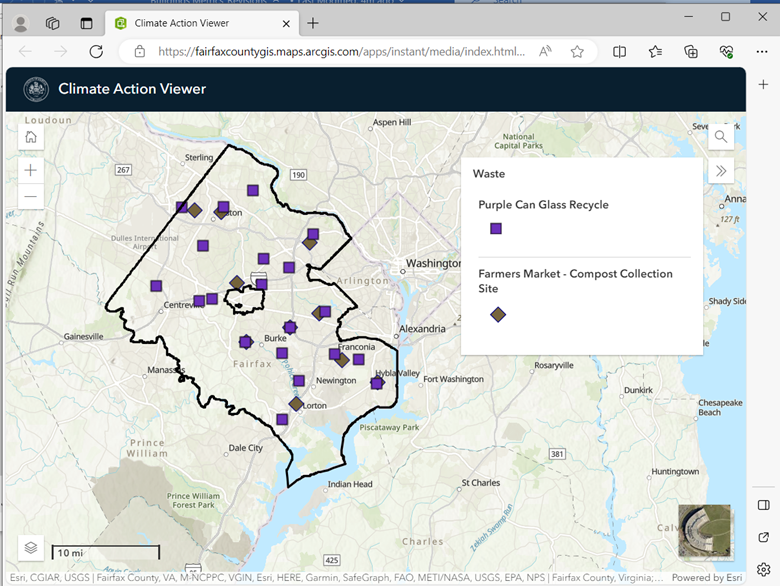EMISSIONS REDUCTION METRICS FOR WASTE
Reduce Waste Generated
.png)
CECAP adopts a goal of “Zero Waste” by 2040, defined as diverting at least 90% of waste from landfills or incinerator facilities. Achieving CECAP’s Zero Waste goal will require reducing the overall volume of the municipal solid waste (MSW) stream and to divert material that can be reused, repurposed, or recycled from the waste stream. This goal accounts for 2.4% of the emissions reduction needed to meet the CECAP goal.
COMMUNITY (CECAP) GOAL: Achieve community Zero Waste by 2040

COMMUNITY (CECAP) PROGRESS TO DATE: Material in the county’s waste stream is disposed of in two ways. Some material is recycled through the county’s many recycling programs, including curbside recycling, yard waste composting, and e-waste recycling. Material that is not recycled is incinerated at the Energy Resource Recovery Facility (E/RRF) in Lorton, Virginia. The share of the waste stream that is projected to be recycled has grown over time and is projected to continue growing, but the overall volume of waste is also expected to grow. To reduce our greenhouse gas emissions, an increase in the recycling rate will be needed.
Projected Fairfax County Waste Generation
| Data Category |
2025 |
2030 |
2035 |
2040 |
2045 |
2050 |
| Fairfax County Population |
1,202,400 |
1,247,500 |
1,238,700 |
1,319,000 |
1,353,600 |
1,384,000 |
| TONNAGE |
— |
— |
— |
— |
— |
— |
| Disposed Refuse |
637,000 |
661,000 |
680,000 |
699,000 |
717,000 |
733,000 |
| Recycling |
465,000 |
482,000 |
496,000 |
510,000 |
523,000 |
535,000 |
| Non-combustible |
119,000 |
123,000 |
127,000 |
130,000 |
134,000 |
137,000 |
| Total Generation |
1,220,000 |
1,266,000 |
1,303,000 |
1,339,000 |
1,374,000 |
1,405,000 |

The county’s Operational Energy Strategy, applicable to county government operations, includes an even more ambitious goal of Zero Waste by 2030. The OES goals are usually reported using Fairfax County’s fiscal year (July 1 to June 30), but this Zero Waste goal is reported using the calendar year (January 1 to December 31).
COUNTY GOVERNMENT (OES) GOAL: Achieve Zero Waste by 2030 (defined as diversion of 90%)
.png)


.png)


.png)


